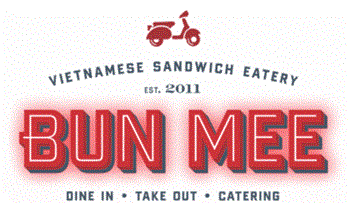🕒Estimated Reading Time: ~15 minutes
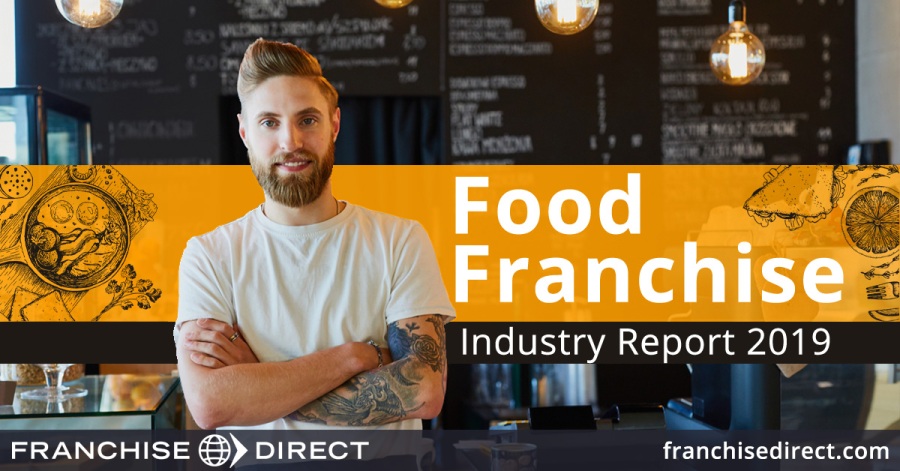
"Without a doubt, food franchises are the most visible businesses in franchising. When people think of franchising, food franchises are almost always top of mind. Furthermore, a large number of today’s prospective franchise owners begin their general search for the right franchise with franchise opportunities in the food segment."
~ Franchise Industry Expert and Consultant Joel Libava aka The Franchise King
Everyone needs to eat. Therefore, food franchises will always be in vogue. From food trucks and kiosks to full service restaurants and everything in between, the food franchise industry also offers prospective franchisees a wide variety of ways to chase their business goals in addition to its constant demand.
Below is a look at some major factors that have been impacting the food franchising industry in the past year. There’s also a look at some factors you should take into account when buying a food franchise towards the end of the report.
The Big Story: Delivery Service Increasing Among Food Franchises
The rest of the food franchising world is finding out what the ice cream man and pizza franchises have long known: customers like delivery. In fact, according to National Restaurant Association data, delivery accounts for 63% of restaurant traffic in cities and other urban areas.

Since many food franchises don’t have an in-house system for delivery, many have turned to third-party delivery services to keep up with demand. Consider the developments over the past couple of years:
- McDonald’s now offers delivery service via Uber Eats in over half of its U.S. locations.
- In 2017, Wendy’s partnered with DoorDash to make its food available in 48 U.S. markets. That number has grown, and Wendy’s has also been seeking additional delivery partners.
- Popeyes introduced delivery to certain markets in early 2018, and now has delivery in about half of its domestic locations.
- Burger King (which actually started trying out delivery services in 2011) re-dedicated itself to U.S. delivery in April 2018, following successes in international markets. It now has delivery in over 3,000 of its more than 7,000 U.S. restaurants, and in over 7,000 of its nearly 18,000 global locations.
- Yum Brands (parent company of KFC, Pizza Hut and Taco Bell) is so gung-ho on tapping into the potential customers using the third-party outlets that it acquired a $200 million stake in GrubHub in February 2018.
- Chipotle added delivery via DoorDash in August 2018. Wingstop and Chick-fil-A (at over 1,000 locations) followed suit in November.
- In March 2019, Checkers (also the owner of Rally’s) launched a delivery platform that brought together five third-party delivery providers (Uber Eats, DoorDash, Postmates, Grubhub, and Amazon Restaurants) under one point-of-sale system to streamline the process for its franchisees.
- In June 2019, Dunkin’ teamed with Grubhub and Seamless (the New York-specific branch of Grubhub) to launch delivery to the five boroughs of New York City.
Even a pizza franchise joined in. Papa John’s, the first major pizza delivery chain to work with a third-party delivery service according to Restaurant Business Online, inked a deal with DoorDash this year to help it reach customers outside of its current delivery zones.
Franchises Creating Their Own Delivery Systems
As a result of all of the above and more, third-party food delivery service revenues are expected to double in the next five years, according to Pentallect. Also, now that market demand appears to have hit a mainstream and sustainable level, industry analysts suspect more food franchises will begin to do delivery on their own as they gain more knowledge of the process.

One of the major driving factors is financial. Currently, most restaurants that use third-party delivery are charged a 15% to 30% commission—a charge that can reduce the profit margins of franchisees. In fact, McDonald’s recently made news by renegotiating its agreement with Uber Eats to reduce its commissions.
When it comes to franchises developing their own delivery systems, Wayback Burgers is one of the first to retrofit delivery into its operation.
Late last year, the company’s senior vice president Pat Conlin, said “I’ve been working for the last four to five months on our own alternative to a delivery solution that we think is going to be pretty significant. We think it will be a game-changer for the delivery business.”
Flash forward to present-day and the burger franchise is now ready to bring its new, compact delivery vehicle to market. Delaware franchisee Jim Patel has been selected as Wayback’s first franchisee to use the vehicle.
Keeping Delivery In-House…Like It’s Always Been
One food franchise bucking the third-party delivery trend entirely, though, is Jimmy John’s. The franchise has even gone so far as to publicly state that “it will never authorize third-party companies like Uber Eats, DoorDash or Grubhub to deliver its sandwiches to its customers.”
One reason for the stance is, unlike most food franchises that aren’t pizza-based, delivery is a part of Jimmy John’s DNA. The company has offered delivery since it first opened its doors in 1983, and is very proud of the system it has in place. Recently, chief marketing officer CMO John Shea said in an email to QSR Magazine: “We have built the best sandwich delivery system in the world.”
Additionally, earlier this year, CEO James North expanded on the primary reason for the franchise’s declaration: product control. “We have a relentless focus on the entire process, from the moment we start slicing fresh produce and baking bread at 6 a.m. to the moment we hand a sandwich to a customer,” he said. “We want to control the experience from the fresh prep to the hand off to the customer.”
Franchises Feeling Out the Shift
However, as food franchises navigate the best way to utilize delivery options, it’s important to note that it doesn’t have to be one or the other. There’s the possibility of using both in-house and third-party systems to reach the most customers possible.
For example, despite having an in-house delivery system of its own, Wing Zone decided to make third-party delivery a significant part of its strategy too. “There's a group of people out there who are loyal to the third-party provider, and for us it’s been an awesome opportunity to add new customers that we probably never would have had [keeping everything in-house]” says CEO Matt Friedman.
But, of course, you will also have some franchises that do something completely different.
Take Flynn Restaurant Group. With 400 locations, FRG is the largest franchisee of Applebee’s, and is probing what would happen if it doesn’t do delivery. Though company CEO and chairman Greg Flynn is quick to note he’s not totally against delivery for his franchises—he also owns Taco Bell and Panera franchises, which participate in third-party delivery.
The Next Big Thing in Food Franchising?
If someone says curry you probably think about an Indian dish. But there’s another kind poised to breakthrough in the U.S. market.
Japanese curry, commonly a bit milder than its fellow Asian counterpart, is beginning to take hold in parts of the country and could soon spread just as far as other Japanese delicacies like ramen, tempura and sushi. When asked if Westerners are ordering more of the dish compared to years past, Yuko Genda, owner of Chicago Japanese restaurant Cocoro, said simply, Japanese curry is “definitely more popular” than when she started.
The spread of Japanese curry would mean American food culture catching up with its home base. “Curry is Japanese comfort food,” explains Tomoko Omori, the president and CEO of Go! Go! CURRY! America, a franchise that serves authentic Japanese curry in the United States. “Nine out of 10 Japanese people would say they grew up eating more curry than sushi or tempura.”
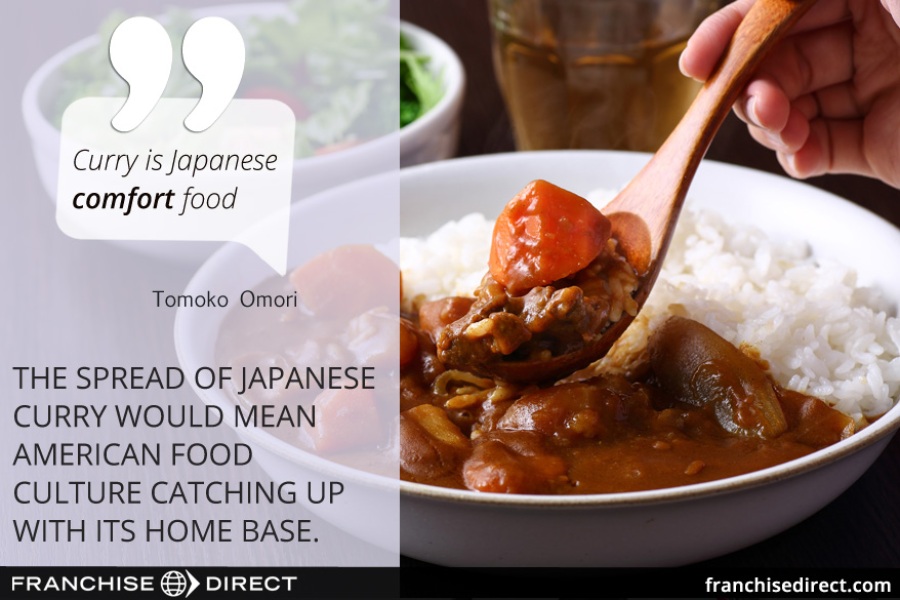
Go! Go! CURRY! America, opened in 2007, is an offshoot of Go! Go! CURRY!, which opened in Japan in 2004. Other Japanese ramen franchises include Jinya Ramen Bar, first opened in 2010. It has 17 openings scheduled for 2019, and disclosed in a press release a goal of reaching 250 total locations in the U.S. and Canada by 2023.
There are regional differences, but Japanese curry, called kare (pronounced kah-ray) in Japan, is a thick sauce typically made with vegetables (such as onions, carrots and potatoes) and spices (such as cardamom, coriander and cloves). It’s usually served one of three ways: over rice, over noodles, or as a filling in a pastry. Over rice is the most popular version, frequently combined with a topping of katsu. Katsu is a flattened, fried cutlet of pork or chicken. For example, Jinya Ramen Bar’s menu features 13 signature bowls with more than 25 toppings.
According to the Japanese Ministry of Agriculture, Forestry, and Fisheries, the number of Japanese restaurants overseas has increased significantly in the past few years—the number was estimated at over 117,500 at last study date in 2017. It was a 30% increase over the number in the 2015 study.
With more and more people visiting “The Land of Rising Sun” and gaining an appreciation for the food, it won't be shocking if you see new Japanese restaurants pop up near you soon. And don't be surprised if one or more of these potential new restaurants focus on Japanese curry.
Quick Hits on Other Food Franchise Headlines
Bigger Not Necessarily Better for Food Franchises
In recent years, the past five in particular, food franchises have been examining the space needed to be profitable.
This probably won’t come as a surprise considering the aforementioned increase in food delivery options, but consumers are dining out less. According to market researcher NPD Group, people are eating at home 80% of the time, which is 5% more than a decade ago. There are several contributors, but the most common factors are cost, the effort needed to eat out, and generational factors related to consumption.
The quest for space economy has also spurred innovation in equipment. Looking for a way to decrease the needed space for its restaurants, Larry Jones, vice president of construction for Captain D’s, challenged one of its equipment suppliers, Vulcan, to develop a more efficient fryer. As a result, Vulcan came up with a fryer that helped Captain D’s reduce the kitchen space needed by 230 square feet. It also reportedly reduces frying times by 30%.
Efficiency is also behind Firehouse Subs’ first major redesign in 25 years. The sandwich franchise’s new kitchen prototype is 25% smaller than the original. The new plans also call for a substantial reduction in seating. The company throughout its history has required franchises to have at least 50 seats available to customers. The prototype now calls for seating of 28, which is a 44% reduction.
According to Firehouse Subs CEO Don Fox, “In this design, we wanted greater efficiency.” Although the redesign cost over $1 million via consumer research and consulting fees, Fox believes the effort will be well worth in the long run to franchisees with less new build costs and less expensive remodels. Lesser day-to-day operating costs were also mentioned as a benefit of the new prototype.
Other food franchises introducing smaller versions of their models include fresh&co, Gyroville, Quaker Steak & Lube, Which Wich and Wienerschnitzel.
Food Franchises Search for Sustainable Solutions for Packaging
Several members of the food industry have joined together in an initiative to improve the sustainability of the packaging they use. The initiative, called the NextGen Cup Consortium and Challenge, was created by Closed Loop Partners, an investment firm that backs efforts for sustainable consumer goods, recycling technologies, and related projects.
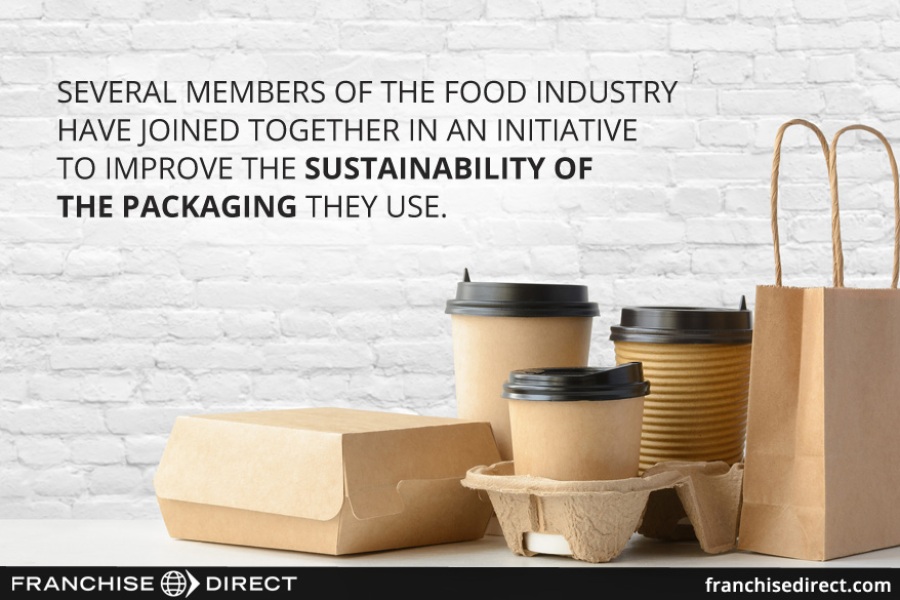
The challenge began in September 2018. Nearly 500 teams from around the world took the challenge, and in February the winners were announced. The 12 winners were awarded up to $1 million dollars in funding. In addition, six moved on to a post-challenge business accelerator, and received ongoing support to scale up their models and prepare their ideas for production and distribution at a global scale.
The founding partners were McDonald’s and Starbucks, which pledged a combined $15 million to the effort. Since then, a number of companies have joined including: Wendy’s, KFC, Pizza Hut, Taco Bell, the Coca-Cola Company, and Nestle. The World Wildlife Fund also joined in as an advisory partner.
Both Bacon and Meat-Free Menu Items Doing Well at Food Franchises
According to Datassentia, the number of restaurant menus that feature bacon has risen by 5% over the past decade. These menus include virtually all burger-based franchises, like McDonald’s, Carl’s Jr., Burger King, and more.
This rise in popularity for the pork product is somewhat ironic considering that as a whole consumers are increasingly focused on healthier options. In fact, sales of plant-based menu items have seen a significant boost at virtually all food franchises, as much as 20% in the past year according to the Plant-Based Foods Association.
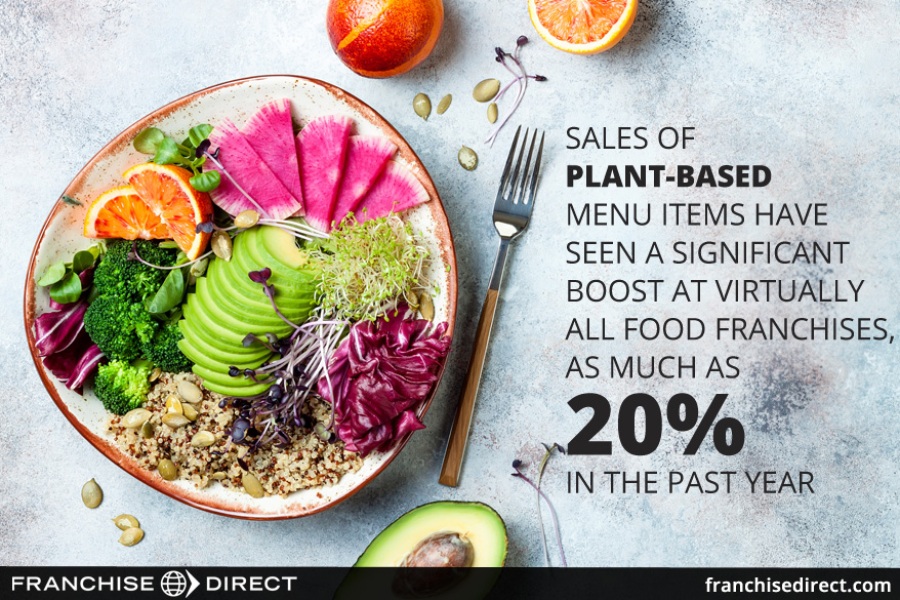
Why? It’s not just vegetarians that are eating vegetarian-friendly fare. “Nearly one-third of the consumer identifies as either flexitarian or say they limit or avoid animal proteins,” says Patty Trevino, senior vice president of brand marketing for CKE Restaurants Holdings, Inc., which includes Carl’s Jr., Hardees, Green Burrito and Red Burrito.
So while customers are indulging every now and again, as a whole they are trying to eat healthier most of the time. And food franchises are doing their best to develop menus that accommodate both desires.
Buying a Food Franchise
Please note: the provisions and fees referred to below are some of the most common and not a complete listing. Please review the Franchise Disclosure Document (FDD) of a franchise for all of the provisions and fees related to investing in that particular franchise.
The Initial Investment and Opening Costs
The amount necessary to open a franchise varies depending on the unique business system and execution requirements. The opening costs for a food franchisee can depend on many factors, including but not limited to: the franchise fee, land and building costs, training expenses (such as travel and living expenses, not the actual training courses), grand opening advertising and marketing costs, and more.
One of the most important variables in how much it costs to open a franchise is the type of franchise being opened and how big it is. Commonly, the two types offered are traditional and non-traditional. Traditional franchises are usually the biggest option. They are typically standalone buildings where the service of the franchise is the only business offering. Sometimes food court locations are also considered traditional locations. Non-traditional franchises are smaller, and typically located within another building like an airport or gas station. Other franchise types include kiosks, trucks, and satellites.
Franchisors offer estimates in their FDD based upon their experience establishing, and in some cases operating, units. However, prospective franchisees should keep in mind these estimates are just that – an estimate. Prospective franchisees should review the figures presented with a business advisor, taking into consideration their unique circumstances, before making the decision to enter into a franchise agreement.
Note: Most estimated initial investment ranges given by franchises don’t include real estate estimates because of the variability. However, there’s typically an estimate for a deposit.
Ongoing Franchise Fees
Throughout the length of the agreement there are costs for being a part of the franchisor’s business system. These costs include items such as royalty fees, charges for technical support, and continued advertising/marketing costs.
The most common is the royalty fee. Examples of how royalties are collected are provided below for each sample franchise. Royalty fees are assessed for the continued use of the franchisor’s trademarks and patented processes, along with certain types of operational support.
In addition to regularly assessed fees, other fees are charged on an “as needed” basis such as audit fees, or costs for additional, non-mandatory, training. Prior to investing, prospective franchisees should do their research and carefully review a franchisor’s FDD for more detailed information on all systems, procedures and costs.
For more information on a number of franchises in this industry currently seeking franchisees, please see our food franchise profiles.
Hottest Food Franchises

Healthier 4U Vending
Superior machine quality, complete hands-on training, & cutting edge locating services make Healthier 4U the choice 4U!
















